Illustrating the Cannock Chase Berry Vaccinium intermedium
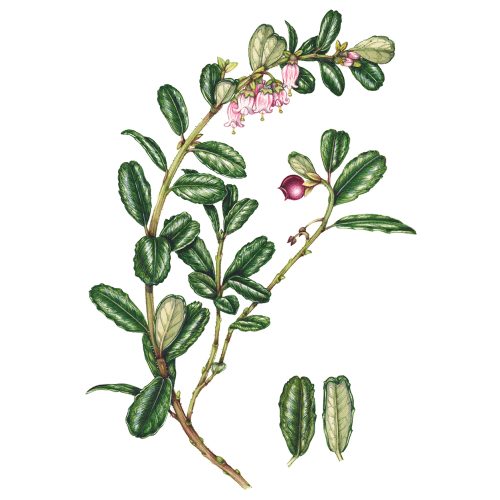
Cannock Chase Berry Vaccinium x intermedium is a really tricky subject to illustrate, because it’s not not only really rare, but also a hybrid. However, it needed illustrating for an identification chart being produced by FSC and Cannock Chase.
Cannock chase berry: Parent species
Hybrids are, according to Collins dictionary, “A hybrid is an animal or plant that has been bred from two different species of animal or plant.” In this case the parents are the European blueberry, Vaccinium myrtillus; and the Cowberry or Lingonberry Vacciuium vitis-idaea. Blueberry and Cowberry are found in profusion on Cannock chase, a wide area of heathland in the West Midlands, and occassionaly, this very rare hybrid, only found on this one heathland site, will appear too. Hybrids commonly share characteristics from both parents, and this is true in the case of the Cannock chase berry. The situation is complicated by the fact that different individual plants will show more or less characteristics of the parent species.
European Blueberry
The Blueberry is easy to recognise when it’s in fruit. It has black berries which look purple or blue, thanks to a waxy bloom. These ripen from a reddish hue. Fruit are produced every year (and are delicious).
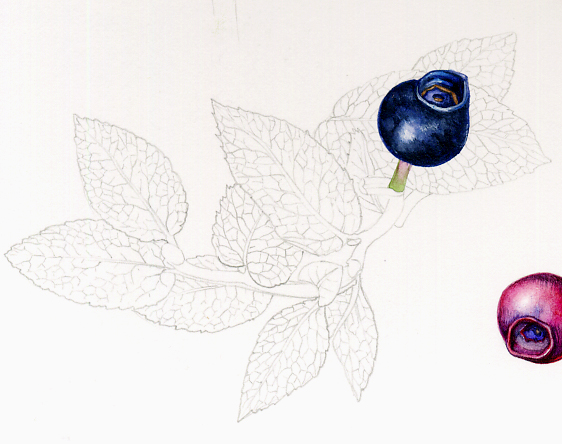
European blueberry, Vaccinium myrtillus sketch of berries
Flowers are round and pink, and grow from the leaf axils, either individually or in pairs. They have 2 Bracts, and no Bracteoles. Inside the flower, the stamens have hairless filaments. For more on the anatomy of flowers, check out my diagram.
Blueberry leaves are deciduous, shedding every autumn. The leaf is thin, bright green and thin, oval, with a sharp tip. The base of the leaf is slightly indented, or heart shaped. Leaf margins lie flat, with small teeth.
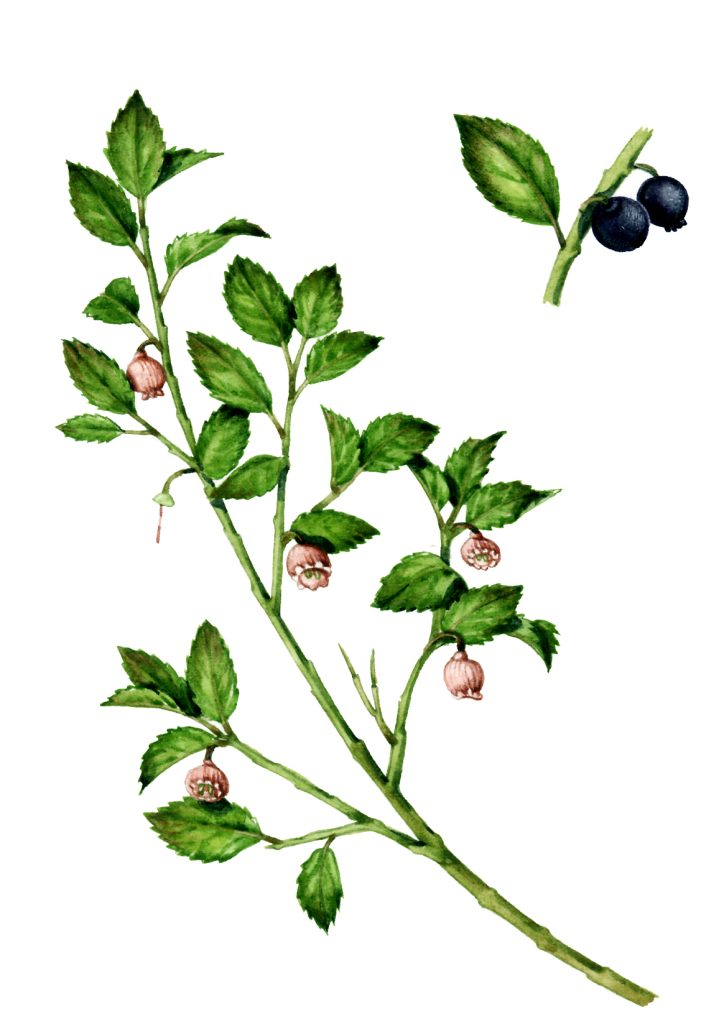
European blueberry, Vaccinium myrtillus
The stem is green, with clear ridges, and is hairless.
Cowberry
Cowberry has bright scarlet fruit, free of bloom. They don’t necessarily appear every year, and are round like the blueberries.
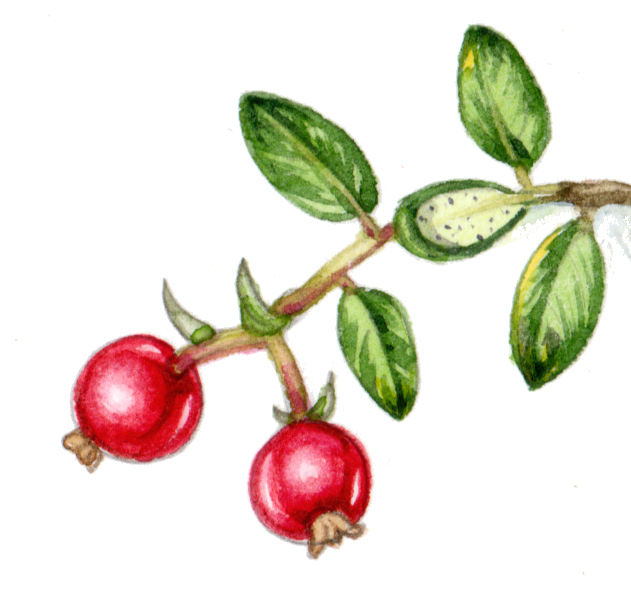
Cowberry Vaccinium vitis-idaea fruit
Flowers are a very pale pink, and are in clusters at the end of stems. There will be between 5 and 10 flowers per stem. They’re bell-shaped, and less rounded than the Blueberry. If you get a hand lens out, you’ll see that the filaments of the stamens are slightly hairy. There’s one Bract and two Bracteoles.
Leaves are evergreen, so they don’t shed in autumn. Once ever few years, the plant will shed its’ foliage. This means in the winter it’s really easy to spot Cowberry, little green shrubby bushes at foot height in the heath. The leaves differ from Blueberry by being tougher and thicker, they’re a darker shade of green, and feel more leathery. The margins have far less obvious teeth, and leaf edges are curled back on themselves. At the leaf tip, the margins sometimes appear concave, emarginate. The base of the leaf is rounded to flattened.
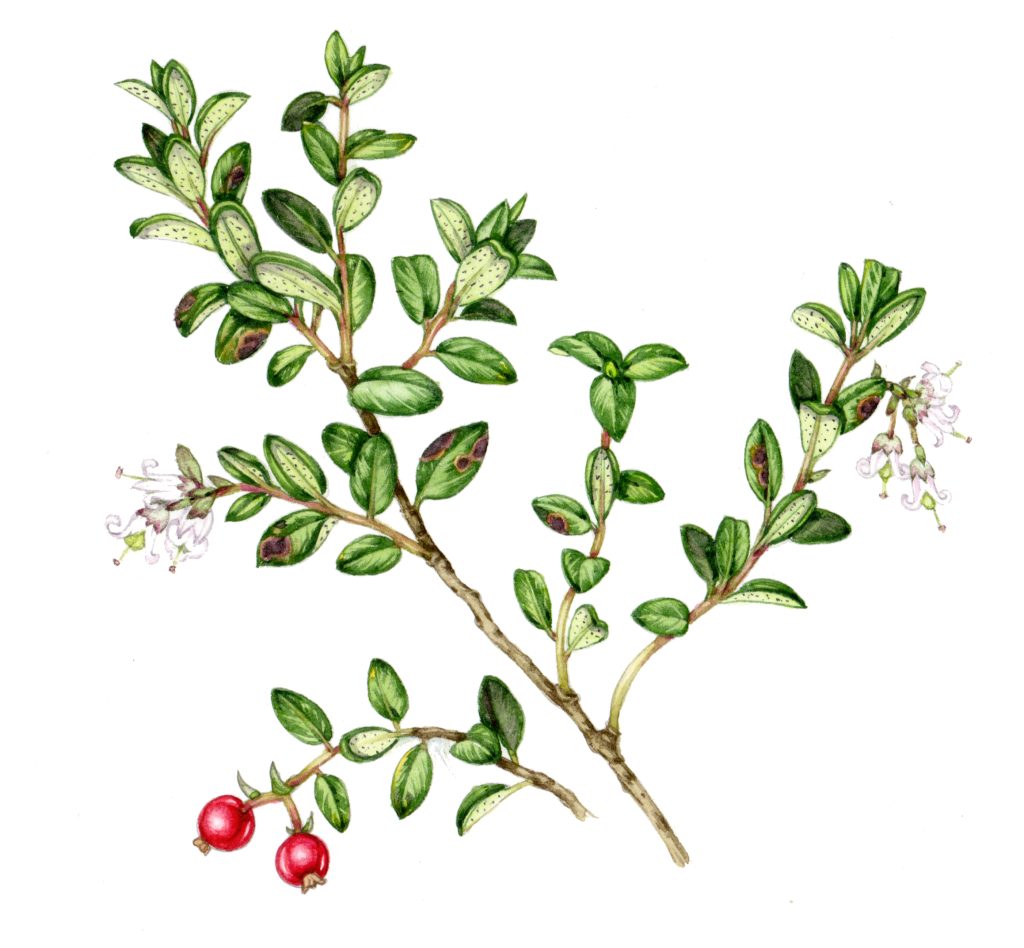
Cowberry Vaccinium vitis-idaea
Stems are brown below, green higher up and less strongly ridged that the Blueberry. They also tend to grow less crooked than Blueberry branches.
Bracts vs Bracteoles
The niceties of botany mean in this case it’s important to know the difference between Bracts and Bracteoles. This is because the comparative numbers of these structures in comparing our Vaccinium species can help tell the species apart.
According to the online Dictionary of botany, a Bract is, “A leaflike organ subtending an inflorescence. Bracts are sometimes brightly coloured and petal-like, as in poinsettia Euphorbia pulcherrima.” So bracts appear below the flower clusters. Meanwhile a Bracteole is, “A leaflike organ subtending a flower in an inflorescence that is itself subtended by a bract .” In effect, the difference is where the leaf-lie structure appears. If you’ve got a cluster of flowers, it’ll be a bract at the base of the cluster, and a bracteole at the base of each individual flower.
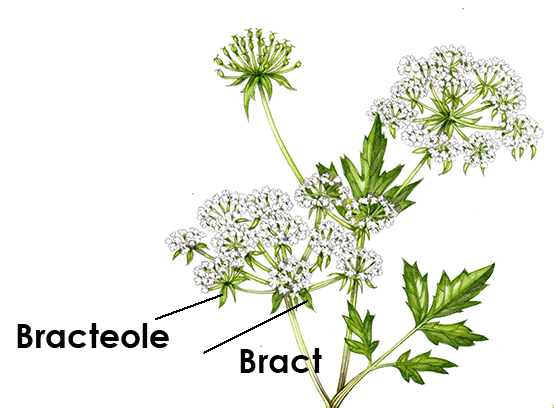
Lesser Water Parsnip Berula erecta bract vs bracteole
Cannock chase Berry
So now we’ve met the parents, let’s meet the star of the show, the Cannock chase berry.
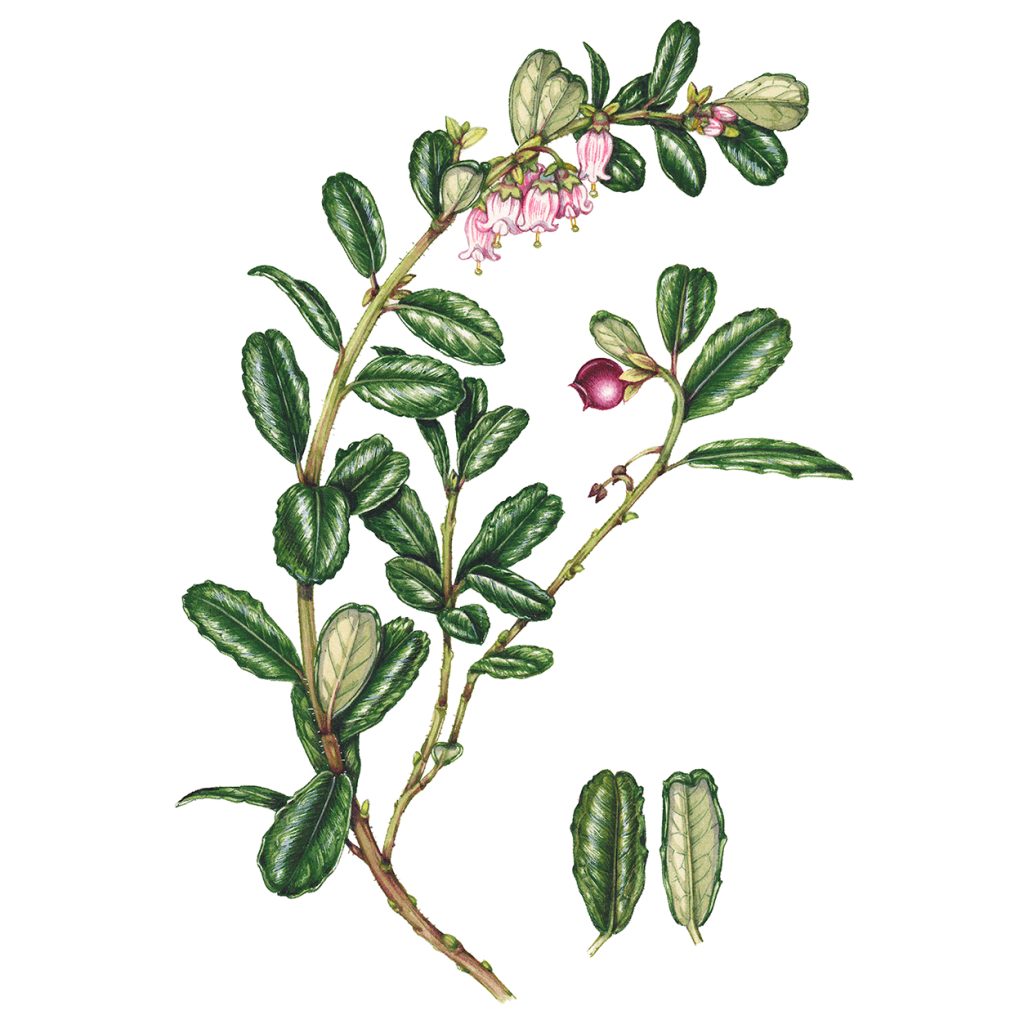
Cannock chase berry Vaccinium x intermedium
We begin with the fruit. This isn’t produced often, and is a mix of the parents; reddish purple. Looking at all the photos, I’d suggest it looks a little more like a Blueberry than a Cowberry, but the colour is certainly a lot redder. The photo by “Bits on Twigs” on Flickr was the most helpful reference I found. I chose only to provide the berry as a side vignette since they appear so sporadically.
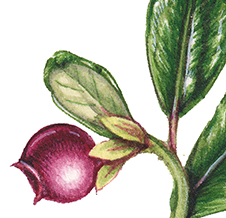
Berry of Cannock chase berry Vaccinium x intermedium
Flowers are in the leaf axils, not in terminal clusters. They’re a sort of rounded bell shape (see? perfect mix of rounded Blueberry flowers and bell-shaped Cowberry flowers), and pale pink. The stamen filaments aren’t hairless (Blueberry) nor are they hairy (Cowberry). Nope. They’re bang in the middle, being gently downy.
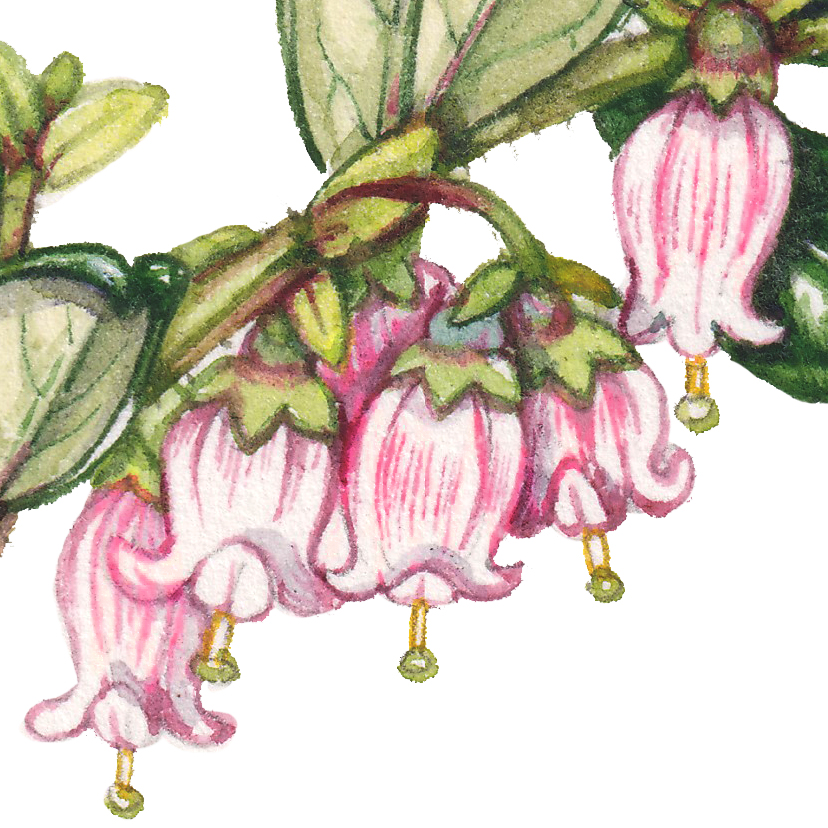
There’s one Bract, and a pair of Bracteoles on each flower.
Leaves are semi-deciduous, not evergreen. Yes they shed, but not every year. They’re somewhere between Blueberry and Cowberry leaves. A mid glossy green, neither thin nor thick and leathery. The thickness and glossy surface may make it hard to see the individual leaf veins Margins are slightly curved back on themselves. There are some margin teeth, but they’re small and not ubiquitous. The leaf bases vary. Some are heart shaped (like blueberry leaves), some are flatter or wedged (like Cowberry leaves). Some of the leaves are rather elongate, and their tips are rather blunter than those of the Blueberry.
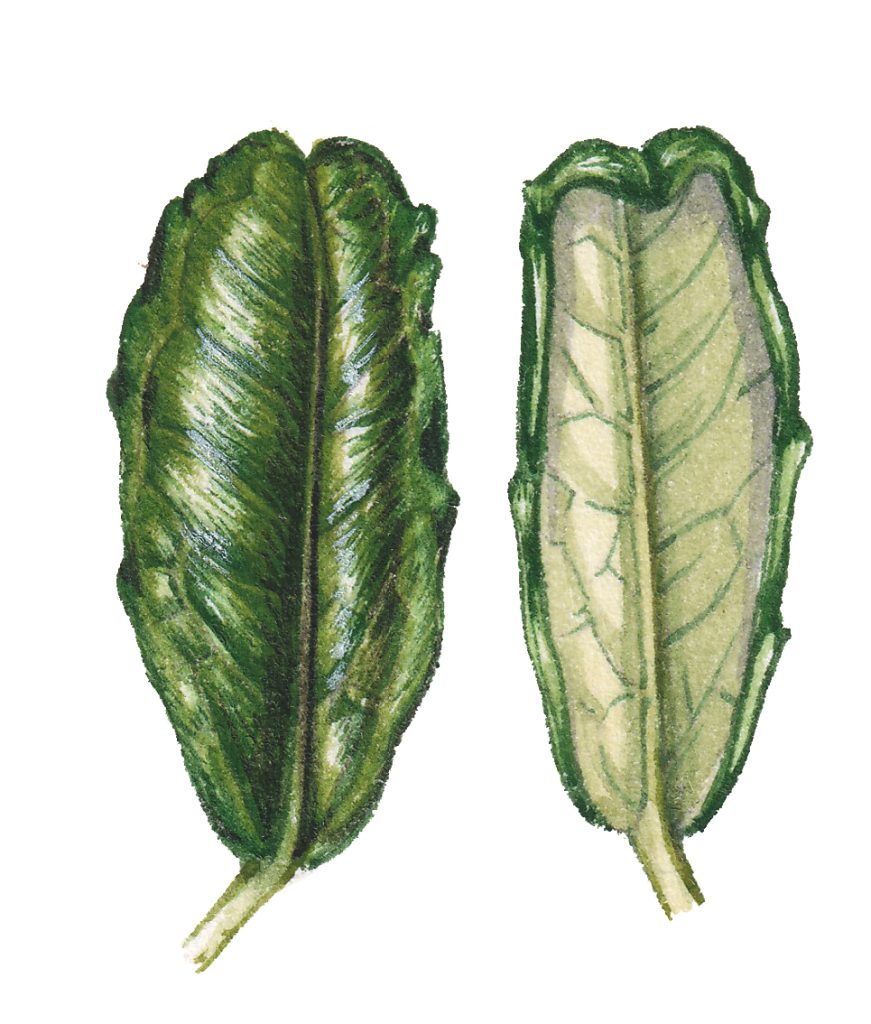
Leaves of Cannock chase berry Vaccinium x intermedium
Stems are a mix of the parent species, too. They tend to be green like the Blueberry rather than brown like the Cowberry. Stems are a bit hairy (Blueberry stems are hairless, Cowberry stems are hairy). And there’s some angling and ridging going on, like the Blueberry, but it’s not as pronounced.

Stem of Cannock chase berry Vaccinium x intermedium
Conclusion
As you can imagine, getting these three species confused is really vey easy, not least because the Cannock chase berry produces fruit so infrequently. The main source for my research on these three species is the BSBI Plant crib, an extraordinary erudite, accessible and free online resource. The pdf for Vaccimium species is here.
Amazingly, late on in the process, I was sent some dried and fresh specimens of the plant to waork with which made life a whole lot easier. the berry was dried out, but the leaves were, fresh, glossy, and beautifully easy to work with,
Other useful resources are iSpot (good for all wildflower identification), and some amazing botanists on Twitter. In particular, the photos so generously shared by Alex Prendergast and JoParmenter made my life a lot easier. Thankyou.
For more on other botanical delights of Cannock chase, please check out my blog.
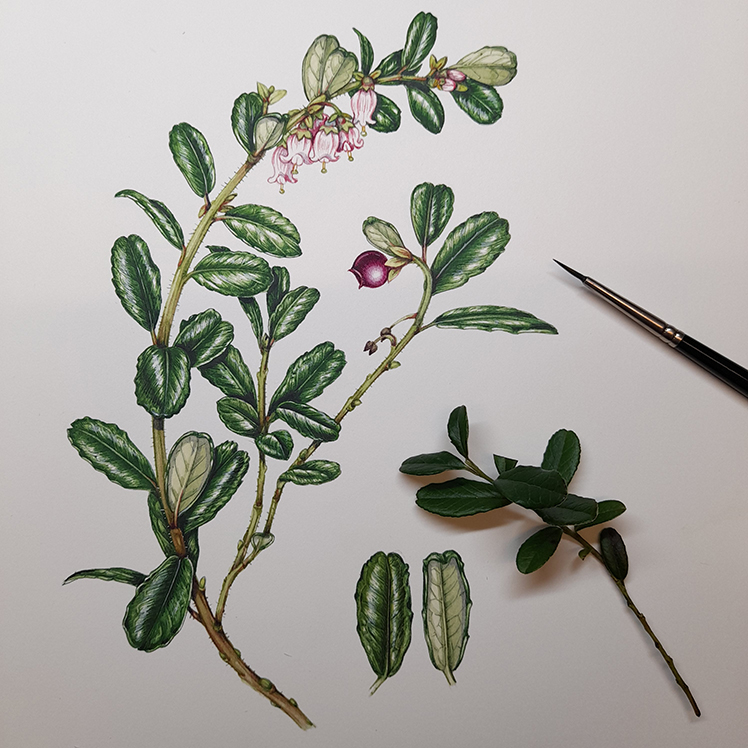
Cannock chase berry with actual sprig of leaves, and my trusty paintbrush


Hi Lizzie, had to read it twice to take it all in. Interesting, evolution at its best.
Regards Peter
Hi Peter, I know. Fascinating little plant, glad you agree. I’ve transplanted it into a sandy area of my garden in the hope that it survives and may confuse botanists something rotten in years to come!
Visiting Cannock Chase area for work, so looking up notable species in the area for a spot of twitching when the surveys are done – and came across the Cannock Chase Berry and this! You have captured it perfectly. Glad to have been able to help. Jo
Thanks!